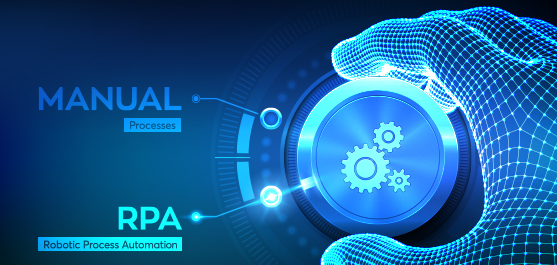Everyone who has ever run a business knows that there are certain repetitive tasks that take up a significant amount of time, but are both repetitive and mundane. These are tasks that have to be done, but that requires very little in the way of high-level expertise. Examples might include moving files and folders, copying and pasting data from one spreadsheet to another, filling in forms, and extracting data from documents.
These are tasks that can now be carried out using something known as Robotic Process Automation. But what is RPA? RPA refers to the use of software robots — commonly known as “bots” — to perform these business processes rapidly, without error and, most importantly, without having to assign the job to a person to carry out.
Bots are not designed to carry out higher-level tasks, such as those which require creativity or strategizing. However, with the introduction of new tool sets such as machine learning, speech recognition, and natural language processing, it is increasingly possible to incorporate cognitive computing capabilities into these automation efforts.
Here are three of the factors to consider when embracing cognitive computing RPA.
#1. Do you understand what cognitive computing can add to RPA?
One of the most important areas for businesses to understand is where RPA can be successfully implemented to make maximum impact. RPA is an incredibly useful technology, although it is by no means “intelligent.” It is useful for repetitive tasks that can be carried out by following clear-cut rules. Cognitive computing capabilities don’t profoundly alter that. What they can do is expand the types of tasks that can be considered repetitive and, as a result, open for automation.
One area are front office tasks, such as classifying customer requests according to basic criteria, and then routing them so that they reach the correct person. Another example might be figuring out which of these requests needs to be escalated, and extracting the necessary information from a longer piece of written communication. As with other RPA tasks, there is little in the way of subjectivity or requiring human judgment in these tasks. What it does is use new technologies to expand the sphere of tasks that RPA can perform. Understanding what cognitive RPA can — and can’t — do will help you make the right decisions to impact positively on your business.
#2. Can processes be reimagined with cognitive RPA in mind?
Any good business person knows when to be flexible. Over time, you’re likely to tweak your business depending on market conditions and customer expectations. Stubbornly holding onto outdated ways of doing business may not be in your best interests. How does this relate to RPA? Because RPA requires a level of standardization in order to be efficient.
As mentioned above, business processes need to be rationalized and made automatable to be tasks RPA can handle well. Even with cognitive computing capabilities, you have nowhere near the flexibility and adaptability you would have from a human doing the role. What you do have is speed, reduced errors, and the option of no longer having to hand certain mundane tasks over to handsomely paid workers who could better be spending their time within the company.
Not every task can be carried out using RPA. However, if there are ways that certain tasks could be made into non-changeable, step-by-step processes you may be able to find ways of automating them. This could involve redesigning them somewhat in order to determine whether or not they are automatable.
#3. Do you know what you want to achieve with RPA?
RPA is good at tasks where there is a clear-cut process involved that they can follow. Businesses should try and be as clear-cut when it comes to their expectations for RPA systems. The chief benefit of RPA technologies is regularly cited as being its potential for cost-saving. After all, a bot can work efficiently 24/7. But there are other possibilities, too — such as more rapidly fulfilling customer requests or improving customer service by responding to queries more rapidly.
What you hope to get out of RPA will influence the strategic choices you make when you introduce and deploy these tools. Make sure you properly consider the business objectives of doing so. This will also make it easier to come up with tangible measures of whether or not RPA is working out for your business. Cognitive computing expands the abilities of RPA tools. But expanded abilities mean nothing if you don’t know exactly what it is that you’re trying to achieve as you supercharge automation efforts.
Wrapping it up: How cognitive computing will take RPA to the next level
It’s already clear that RPA is changing the business world. Unlike some of the more ambitious artificial intelligence (AI) initiatives which promise massive shifts, but on a longer timeline, the effects of RPA are already being seen in 2021. The introduction of new cognitive computing technologies such as natural language processing will only make these tools more valuable. What you, as a business owner, need to do is to ensure that you’re picking the right tools for the job.
Get the balance right, and you’re on to a productivity winner.



